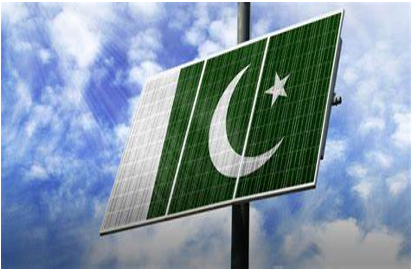INP-WealthPk
Amir Saeed
Driven by the rising demand and affordability, Pakistan’s solar energy boom highlights the need for government action to support local manufacturing and address challenges to the national grid caused by the decentralized energy adoption.

The solarization movement in Pakistan, while promising, is hampered by significant reliance on external support and lack of proactive government initiatives. According to the Renewables First report, “The Great Solar Rush in Pakistan,” this dependency on Chinese technology complicates the landscape. As countries like those in the EU and the US push for localization, there is a risk of increase in prices and potentially slow deployment in the Emerging Markets and Development Economies (EMDEs).
This situation highlights the tension between geopolitical concerns and the urgent need for rapid decarbonization in developing economies. The aftermath of the Russia-Ukraine conflict has further strained energy systems in developing nations, including Pakistan. The need for energy independence has prompted a shift toward local and decentralized energy systems, as the soaring costs of imported coal and RLNG have forced consumers to seek alternatives.
Despite having sufficient grid capacity, the market dynamics driving this transition are often indifferent to the traditional energy planning perspectives. Rapid adoption of solar technology, fuelled by declining costs and improved efficiency, reflects a powerful innovation aligned with environmental needs. Pakistan’s experience illustrates a crucial lesson: when governments fail to act swiftly, citizens take charge.
The explosive growth of distributed solar energy, often outpacing official regulatory frameworks, highlights the effectiveness of grassroots initiatives in driving energy transitions. This bottom-up approach contrasts sharply with the conventional top-down strategies typically associated with industrial decarbonization and financing from multilateral development banks. Historically, discussions surrounding energy transitions have focused on large-scale utility projects and massive decarbonization efforts.
However, Pakistan’s model demonstrates that people can effectively shape up their energy future through market forces and basic economics. As solar adoption continues to surge, it raises critical questions about the viability of traditional state-run grids and economic implications of large-scale renewable integration. The solar market in Pakistan is experiencing significant growth, primarily driven by imports, particularly from China.
Ali Majid, General Manager of LONGI, highlighted that Pakistan’s reliance on imported solar panels stems from high electricity costs and an uncompetitive industrial environment, which hinders local manufacturing capabilities. Currently, Pakistan ranks as the third-largest buyer of Chinese solar panels, with imports expected to reach 22 gigawatts by the end of 2024.
Majid suggested that to foster local production and attract foreign investment, public sector projects should be mandated to utilize ‘Made in Pakistan’ solar panels. He opined that this initiative could incentivize international manufacturers to establish assembly plants in the country, thereby reducing import dependency and enhancing local industry. As the demand for solar energy surges due to rising electricity prices, implementing such policies could be pivotal in transforming Pakistan into a competitive player in the global solar market.
Credit: INP-WealthPk



